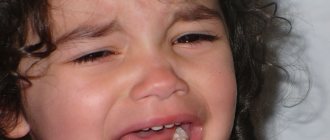Article:
Autism is one of the most difficult diagnoses to diagnose and is often confused with other diseases.
Thus, autism spectrum disorders are often perceived as alalia. This is explained by the fact that an autistic child may initially suspect deafness or blindness, because reactions to calls to him are quite weak or completely absent. However, if something interests the child, you can observe pronounced emotional reactions that quickly dispel doubts. Therefore, despite the difficulty of recognizing disorders, it is possible to do this.
What is alalia, and what are the classifications of the disease?
Alalia is a slow development of speech, or its complete absence, with intact hearing. Alalia and autism are similar in that they have difficulty perceiving speech that is not caused by a malfunction of the hearing aid.
However, unlike autism, the child is more willing to make contact and can be involved in games that do not require constant communication.
There are sensory, motor and sensorimotor alalia. Sensory is the inability to attach proper emotional color to words.
At the same time, the meaning of the word and its pronunciation diverge. Sensory alalia may be suspected when:
- the child unconsciously repeats words after someone;
- stammers and changes letters in words;
- words are pronounced impulsively, sometimes merging into one;
- lack of understanding of a word with its objective meaning.
Autism and sensory alalia may be similar to the child’s somewhat withdrawn, depressed state. They do not understand the speech of the environment, which is the reason for the difficulty in pronouncing sentences with expression.
Motor alalia and autism may be similar attention and performance disorders. With alalia, these manifestations are also accompanied by impaired intellectual development. It appears with lesions of the cortical end of the speech motor analyzer, as well as the conduction pathways. Plus, a decrease in the activity of these zones can also lead to motor alalia.
Sensorimotor alalia and autism may be confused due to the aforementioned symptoms, such as some withdrawal from interactions with others and distraction. However, alalia and autism still have differences. Moreover, timely making the correct diagnosis can be a decisive moment in the treatment of a child.
Mental retardation
This pathology is otherwise called oligophrenia or intellectual disability. Here everything is much worse, since almost nothing can be fixed. Disturbances in the development of the brain and central nervous system lead to a stop in the improvement of the child’s intelligence. He is unable to think abstractly, his cognitive functions are impaired, his emotions are simple and poor.
A mentally retarded child speaks and walks slowly, as he has a special vegetative state. His memory is limited, his ability to learn and acquire skills is lower than average, and he often cannot take care of himself normally. Such a baby easily becomes attached to people who treat him well. He does not withdraw into himself and easily, with pleasure, makes contact.
Like autistic children, children with this disorder also love music.
This pathology is congenital or manifests itself in a child under three years of age. It should be noted, however, that if it is mild, the diagnosis can be made after completing a primary school course.
Important: oligophrenia cannot progress.
The “culprits” of intellectual incapacity are well defined:
- smoking and drinking alcohol by the expectant mother during pregnancy;
- exposure to toxins on the fetus;
- hypoxia during childbirth;
- Klinefelter's, Down's syndromes, etc.
How is alalia different from autism? Diagnosis criteria
The differences between these diseases will help determine whether a child has alalia or autism. So, the criteria for determining diseases are described below.
| How to distinguish alalia from autism : main signs | ||
| Criterion | Alalia | Autism |
| Need for communication | The child comes into contact with adults and prefers joint activities. | There is no desire to communicate. In classic autism (Kanner syndrome), the child prefers to look at objects, leaf through books, etc. |
| Pointing gestures | Learns independently. | Have to vaccinate. |
| Speech development in alalia and autism before those years | Focus on dialogue. Reaction to speech addressed to a child. | Aimlessness of speech. Conversations only on topics that interest the child. |
| Sound pronunciation side of speech | Safety is normal. | Severe disturbance of tempo, tone and color of speech. |
| Expressive speech | There is a general underdevelopment of speech. But with constant work on this problem, its restoration is possible. | Lack of specific words like “I”, “mine”, etc. There is no addressing others by name. |
| Mental development | Possible mental retardation and instability of attention. | Possible mental retardation and impairment of cognitive processes (memory, logic, etc.). |
| Emotional-volitional processes | Hysterics are possible, which are easily extinguished and prevented. Slightly higher anxiety than peers. | People get hysterical easily and for minor reasons. They come out of such states on their own, after a complete outburst of emotions. |
Motor alalia and autism also differ in the presence of phobias and fears. Alaliks may have manifestations, but in a weak form, and in the presence of concomitant attention disorders or hyperactivity. Fears are not uncommon for autistic people. Moreover, they are rarely substantive and do not carry objective reasons.
The differences are also noticeable when playing and practicing. Thus, the autistic person will take on roles in the game, but at the same time will be determined to act independently. Alalik will prefer to play in company. Plus, he will not be against classes with a speech therapist, parents or psychologist, while an autistic person will find it difficult to make contact.
Impaired motor skills and coordination can be seen in both autistic children and children with alalia. However, for the latter, this problem is easier to correct. Obsessive movements (stereotypes) are more typical for autistic people.
Autism
This child development disorder appears in children at the age of 2 years, but the diagnosis can be confirmed later - at 3–5 years. Autistic people build their own little world and don’t want to leave it; they like to play completely alone and not communicate with anyone. The connection of such children with the outside world is disrupted, although they are quite healthy physically.
Signs of autism:
- isolation on oneself, avoiding people, not looking for friends;
- prefers to play alone;
- difficulties in verbal (speech, writing) and non-verbal (facial expressions, gestures, touch, assessment of appearance and voice) communication. Speech delay, mutism - random pronunciation of phrases and words;
- social interaction is impaired - lack of emotions for the actions of other people, leaves calls to him unanswered, does not look him in the eye, does not become attached to anyone;
- stereotypical behavior - the presence of certain mandatory rituals, repetition of the same type of movements for a long time, echolalia - repetition of words;
- may show aggression when trying to establish contact, screams;
- any changes taking place around him disturb him.
For some people (1-2 people), autistic children make an exception and can communicate with them.
The exact cause of autism has not been established, although many experts are inclined to believe it is genetic. Some believe that this pathology is caused by organic diseases of the brain.
Autistic people love music. With a mild form of the disorder, they can even surpass their peers in intelligence and study better, but only in some subjects, since their mental development is very selective. In addition, such people very often demonstrate outstanding abilities in certain areas (science, art) and can adapt quite normally in society with the right approach to upbringing, training and special correction.
Examination of alaliks and forecasts for improvement of condition
Autism and alalia are determined according to IOM and preschool education. These are individual routes for accompanying the child, the conclusions of which will be taken into account when making a diagnosis. They reflect the observations of a psychologist, teachers and speech therapists regarding the child’s condition.
Precisely because motor alalia and autism have differences, the prognosis for the restoration of the abilities of children in the first case is much more comforting. So, if you accompany your child and have regular sessions with a speech therapist and psychologist, you can significantly improve your child’s speech skills. Moreover, a primer for children with alalia and autism, which is used in remedial classes, can also help with this. It allows the child to perceive information more easily and better cope with the assigned tasks of learning writing and pronunciation. The establishment of a connection between an object and a word also improves.
But in general, if you take care of your child and believe in improving his condition, you can achieve positive results. This is evidenced by both comments from doctors and reviews from parents who have encountered this problem.
Impaired mental function
In this case, the child’s psychomotor skills, speech, emotions, thinking, attention, memory, etc. are below normal for his age. Such children are characterized by excessive lethargy; they have difficulty mastering the simplest skills - using a spoon, getting dressed. They begin to talk later, avoid peers and adults, and are unsociable.
ZPR, according to experts, is a passing phenomenon, and if measures are taken in time and the correct correction is carried out, then by the age of 10 it will completely disappear. The causes of this disorder: somatic diseases, including those of the expectant mother before and during pregnancy.
Vague concept
There is simply no concept of “autism spectrum disorder” in ICD-10. There is Asperger's syndrome, or autistic psychopathy, Rett syndrome, childhood dementia (also known as disintegrative psychosis) and other similar diseases with or without mental retardation. But in the DSM-5, the American Diagnostic and Statistical Manual of Mental Disorders, there is a concept of ASD. It unites all diseases that ICD-10 classifies as general disorders of psychological development.
The main diagnostic criterion for ASD is the classic triad characteristic of childhood autism. But this is where the confusion lies: in some diseases included in the concept of ASD, these signs are not always fully manifested.
ICD-11 will come into force in 2022. In the new edition, autism spectrum disorders are a category in the subsection “Mental and behavioral disorders.” They are divided into 6 subcategories, but not according to specific diseases. Functional language (without impairment, with impairment, absent) and intellectual development (without or with impairment) are taken into account. The main issue has also been resolved in ICD-11: autism and ASD are one and the same thing, at least as of 2022.
Escape from the verbal jungle
Terminological disputes are a consequence of poor knowledge of the causes of diseases that manifest themselves in the triad characteristic of RDA. This is directly reflected in the classifications, because their final form depends on what principle the compilers used as the basis for dividing diseases into groups and subgroups. Despite the fact that ICD-11 clearly suggests that autism and ASD should be considered one and the same, in practice, in order to select diagnostic, treatment and correction algorithms, it is not always enough to assess only the level of intelligence and speech development, because these symptoms are only an indicator of the functional maturity of the brain. But classifiers do not remain unchanged. If the medical community decides that the new classification is not good enough, changes may be made.
For patients and their parents, it is not so much the name of the condition that is important, but rather early diagnosis, a comprehensive assessment of the child’s health, and selection of the most effective therapy and rehabilitation activities. There are no universal schemes for diseases in which the triad characteristic of childhood autism manifests itself; only an individual approach and active joint work of doctors, teachers and parents help. Perhaps the compilers of ICD-11 are right: in early diagnosis it is difficult to unambiguously differentiate various conditions that resemble RDA. It is almost impossible to provide assistance without an established diagnosis within the framework of evidence-based medicine, and the earlier the child begins to receive therapy, the better the prognosis.




